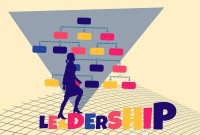- Home
- Business Processes
- Industry Knowledge
- Aerospace Industry
- Automotive Industry
- Banking Domain
- BFSI Industry
- Consumer/ FMCG Industry
- Chemicals Industry
- Engineering & Construction
- Energy Industry
- Education Domain
- Finance Domain
- Hospitality Domain
- Healthcare Industry
- Insurance Domain
- Retail Industry
- Travel and Tourism Domain
- Telecom Industry
- Leadership Skills
- eLearning
- Home
- Leadership
- Leadership Styles
- Bad Leadership Style
Bad Leadership Style
A good leadership style is something that every effective leader must have in order to succeed, but identifying what that entails or does not entails might be difficult to understand. Most of the research on leadership focuses on the exemplary, best practices, and positive attributes of effective and successful leaders. This article talks about a new approach to learn leadership using lessons from bad leadership. That is the lessons to be learned by examining leaders who have not effectively exercised their power, authority, or influence.
What is Bad Leadership?
While the word "leadership" itself is always associated with positive organizational changes and success but the eternal truth has been that there is more number of ineffective leaders than the leaders that have been good and effective. Bad Leadership is a provocative departure from conventional thinking and compels us to see the dark side of leadership. What it really means to be a bad leader? What are the specific examples of bad leadership styles? How do we carefully examine and understand bad leadership? As per this approach that was outlined in the book Bad Leadership: What it is, How it happens, Why it Matters by Barbara Kellerman (2004), she argues that all leaders must be studied, whether they used their power and authority for good or whether they were “power wielders” who served their own purpose and greed. ‘Bad’ might refer to either ineffective or to someone who failed to produce the desired change, or unethical, or both.
Seven Types of Bad Leadership:
Kellerman in her book explores seven primary types of bad leadership and dissects why and how leaders cross the line from good to bad. Bad Leadership makes clear that we need to face the dark side in order to become better leaders and followers ourselves. Given below are seven types of bad leadership:
1. Incompetent: where the leader lacks the skill or will to be effective
2. Rigid: where the leader is unwilling to adapt or change
3. Intemperate: where the leader lacks self-control
4. Callous: where the leader is uncaring or unkind
5. Corrupt: where the leader lies, steals, or cheats
6. Insular: where the leader disregards the welfare of those outside the group
7. Evil: where the leader commit atrocities or uses pain as an instrument of power
Book to Read/References:
Bad Leadership: What it is, How it happens, Why it Matters by Barbara Kellerman (2004)
Related Links
You May Also Like
-
This style is characterized by leaders making decisions for others and expecting followers to follow instructions. The directive leader is adept at giving instructions, setting expectations, and establishing timelines and performance standards. However, it is possible for the same leaders to display both directive and supportive behavior as per the demands of the situation.
-
We define Lean as the systematic elimination of waste through a continual effort to decrease inefficiency; the lean leader strives to create a more efficient organization. Lean leadership is a philosophy. It is a consistent way of thinking and being in your role as a leader. The focus of this approach is on raising new leaders and help their team embrace a culture of continuous improvement. Learn what we mean by lean leadership style and its principles.
-
Collaborative leadership is all about collaborative problem-solving and decision-making or can also be defined as the leadership of a collaborative effort. . The term started to appear in the mid-1990s in response to the formation of long term public-private partnerships to rebuild public infrastructure. Learn how you can use principles of collaborative leadership to enhance your leadership skills for being an effective leader.
-
Emergent leadership occurs when a group member is not appointed or elected as leader, but rather that person steps up as the leader over time within-group interactions. Have you ever faced challenges in getting accepted into your new role of position as a leader? Groups don't automatically accept a new "boss" as a leader. Emergent leadership is what you must do when taking over a new group. Learn more about emergent leadership.
-
Charisma is a certain quality of an individual personality, by virtue of which he is set apart from ordinary men. Charismatic Leader gathers followers, through dint of personality and charm. Understand the meaning and concept of Charismatic Leadership and the qualities of a charismatic leader. Gain an understanding of the advantages and disadvantages of using charismatic leadership. Finally, explore the difference between charismatic and transformational leadership.
-
There are four characteristics of leadership that help us to understand the character of leadership as a concept. 1. Leadership is a process, 2. Leadership involves influence, 3. Leadership always occurs in a group context and 4. Leadership involves goal attainment. These are the four components that make up the character of the 'leadership' term and help us to define the leadership concept. All of these components of leadership have common characteristics.
-
Bureaucratic leadership relies on a clear chain of command and strict regulations. Bureaucratic leadership style is a very decent style for work involving serious safety risks, such as handling toxic substances, moving large objects. The focus is on compliance with rules and laid down procedures to make sure that the group is doing their job correctly and safely. Learn some advantages and disadvantages of this style and situations in which this style could prove to be effective.
-
Adaptive leadership is a style of leadership that emphasizes the importance of each and every person and role within the company. Adaptive leadership views the organization as an ever-changing, living organization, where employees can learn, adapt, and grow. Adaptive leaders mobilize people towards a common goal and also have the courage to experiment with new ideas and approaches. Adaptive leadership is the practice of mobilizing groups of people to tackle tough challenges and thrive. Learn how to adopt this style and how to become an adaptive leader!
-
Authentic leadership is an approach to leadership that emphasizes building the leader's legitimacy through honest relationships with followers which value their input and are built on an ethical foundation. The authentic leader acts upon his or her values and beliefs, and inspires others to do the same, is committed to know and develop oneself. Are you committed to developing yourself; know your motivations and the purpose of your leadership? Read this article to know more about authentic leadership style and discovering your authentic self.
-
Facilitative Leadership is all about involving the employees in the decision-making process at all levels enhancing their sense of ownership, responsibility, and motivation. Facilitative leadership style uses a number of indirect communication patterns to help the group reach consensus and build commitment for the decision taken. To be effective in modern organizations, managers need to become facilitative leaders, learn what it means to be a one.
Explore Our Free Training Articles or
Sign Up to Start With Our eLearning Courses

About Us
Learning
© 2023 TechnoFunc, All Rights Reserved










